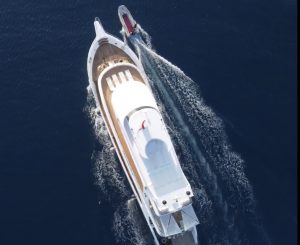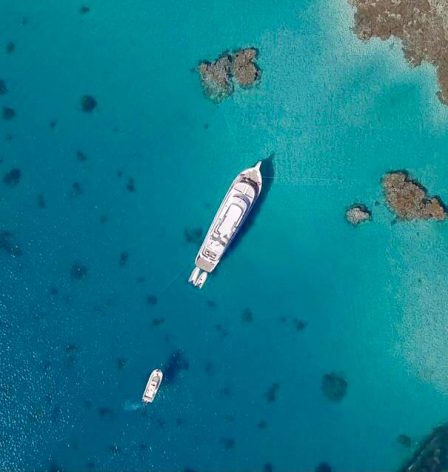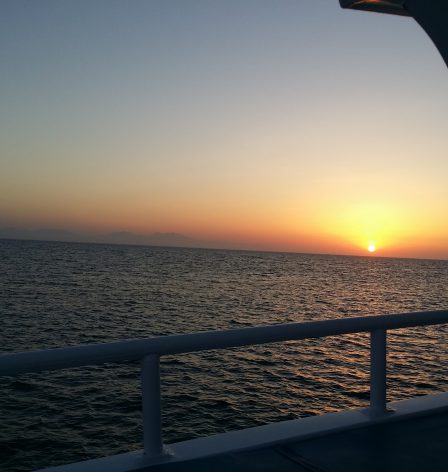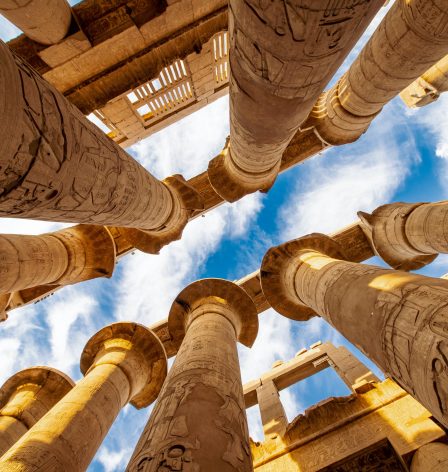We are dedicated and all yours to make your adventures in Egypt as pleasant and memorable as possible.
Please have a sneak peek on this site to get to know us a little better. We like what we do and it shows every day. Our goal is your satisfaction. We let our service do the talking.
Why choose this route?
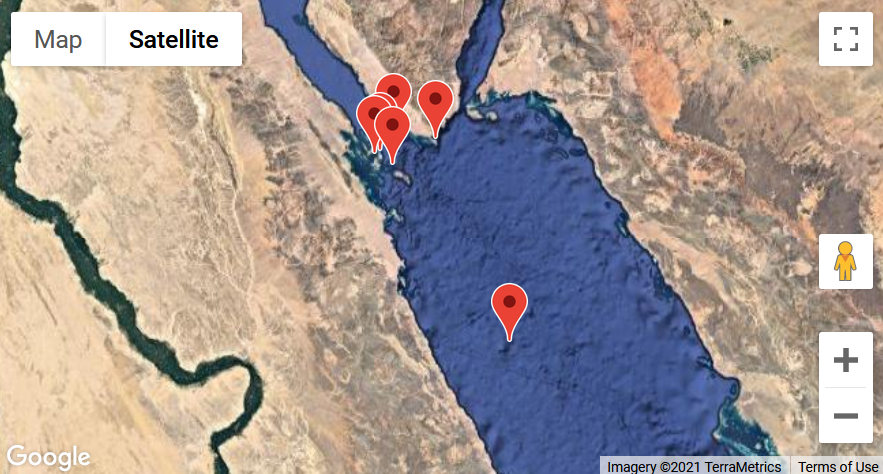
Daedalus/ Zabargad/ Rocky/ St. John’s/ Fury Shoals Adventures
This trip features the reefs of Daedalus, and St John’s, combined with the Zabargad and Rocky Islands. This one tops the bill of our liveaboard menu.
Sea beds drop to 15-20 meters, depending on the site, where dozens of slender coral towers can be observed. You will see great corals, shaped like giant umbrellas and cupolas. It’s where many tropical groupers roam. At night octopus, crinoids, crustaceans and nudibranchs ‘wander’ through innumerable coral grottoes and corridors. With a little bit of luck, it is possible to spot pelagic species such as blacktail sharks, eagle rays, manta rays, barracuda and tuna fish. Watch out for Sohal surgeonfish, butterflyfish, triggerfish, moray eel, manta rays and gigantic humpback wrasse.
Daedalus Reef
Daedalus, also known as Abu Kizan, is a preserved marine park. It’s isolated and remote and respected for its strong currents. Therefore, diving the Daedalus is a challenge. You certainly won’t be disappointed by the fantastic display of fire corals, brain corals, leafy corals, raspberry corals and spiny row corals. This reef reaches depths of about 450m.
Daedalus attracts pelagic passages from barracuda, dogtooth tuna, jacks, sea turtles, black tip reef sharks, oceanic white tip sharks, hammerheads and grey tip reef sharks.
Daedalus is the residence of the clownfish, living in symbiosis with anemones. It is also a stomping ground for twin spot snappers, blue cheeked butterflyfish, schools of surgeonfish, fusiliers, bigeye trevallies, moray eels, manta rays and the majestic napoleon wrasse.
Zabargad Island
Zabargad takes its name from the mineral olivine gem, once mined on the island. It’s location is southeast of Port Berenice. Wall drops here to 15 to 20 meters. The seabed is equipped with coral towers and pinnacles. The floral landscape is formed by innumerable species of corals, such as the staghorn coral, the honeycomb, the flowerpot and tapestries of sienna brown tubular sponges.
Zabargad Island’s claim to fame is its labyrinthine panorama of coral canyons,, grottoes and corridors. They have been created by interlinking pinnacles and pillars, forming punctured rooftops. Those punctures ‘filter’ sun rays, penetrating through crevices and cracks, turning Zabargad into a poetic affair.
Rocky Island
Rocky Island is a small island, twenty minutes cruising from Zabargad and a pelagic haven, featuring a great variety of sharks, manta rays, countless groupers, jacks and barracudas.
Its walls are tumbling down to more than 100 meters. They show tapestries of sea fans, gorgonians, mountain corals, black coral trees and staghorn corals. It’s sheer fascinating seeing the waving gorgonians, subject to the current’s rhythm,.
Rocky Island is exposed to the sea and the elements, attracting a fabulous range of silver tips, and hammerhead sharks. It gave rise to the sobriquet ‘shark theatre’.
Unlimited visibility adds to the fish tank feel and fascinating marine life, featuring Red Sea bannerfish, the clearfin lionfish, the zebra angelfish, blackspotted sweetlips, the rusty parrotfish and the devil scorpionfish.
St John’s Adventure
St John’s is a reef system, not too distant from Rocky Island and Zabargad.
Its underwater scenery comprises many corridors and grottoes, like aquatic caves, during the day illuminated by penetrating sun rays. The visibility is great. St John’s is famous for its diversity of corals, such as black corals, serpentine corals, cabbage corals, staghorn corals and fire corals. Those corals are the perfect décor for blackspotted grunts, blue spotted rays, batfish, parrotfish, chromis, butterflyfish, squirrelfish and anemonefish.
Fury Shoals Adventure
The Fury Shoals are challenging dives at the venues of Hamata Islands, Abu Galawa Kebir, Shaab Maksour, Shaab Claudio, Malahy Bill and Shaab Sataya, also known as the Dolphin Reef.
Steep walls await you, teeming with marine life, dotted with commodious rifts, inhabited by coral fish and red and violet soft corals. Specifically the red coral has built ochre coloured ‘candelabra’ in time, with very fine and fragile white tips. They can reach the surface in the most spectacular way and make your day…
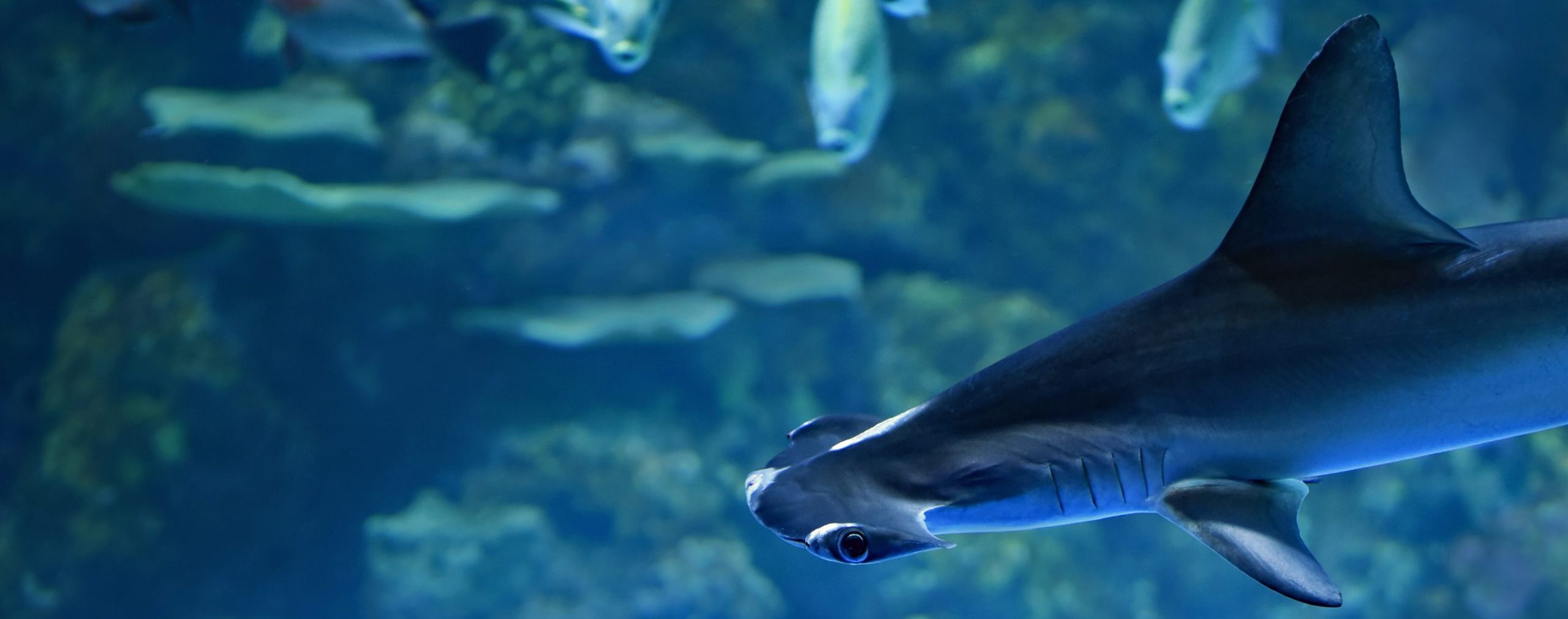
Daedalus Reef
Daedalus, also known as Abu Kizan, is a preserved marine park. It’s isolated and remote and respected for its strong currents. Therefore, diving the Daedalus is a challenge. You certainly won’t be disappointed by the fantastic display of fire corals, brain corals, leafy corals, raspberry corals and spiny row corals. One can descend to depths of 30 meters.
Daedalus attracts pelagic passages from barracuda, dogtooth tuna, jacks, sea turtles, black tip reef sharks, oceanic white tip sharks, hammerheads and grey tip reef sharks.
Daedalus is the residence of the clownfish, living in symbiosis with anemones. It is also a stomping ground for twin spot snappers, blue cheeked butterflyfish, schools of surgeonfish, fusiliers, bigeye trevallies, moray eels, manta rays and the majestic napoleon wrasse.
Aquatic Panorama
- Spiny row corals
- Leafy corals
- Raspberry corals
- Sohel surgeonfish
- Blue cheeked butterflyfish
- Twinspot snappers
- Fusiliers
- Spanish dancers
- Sharks
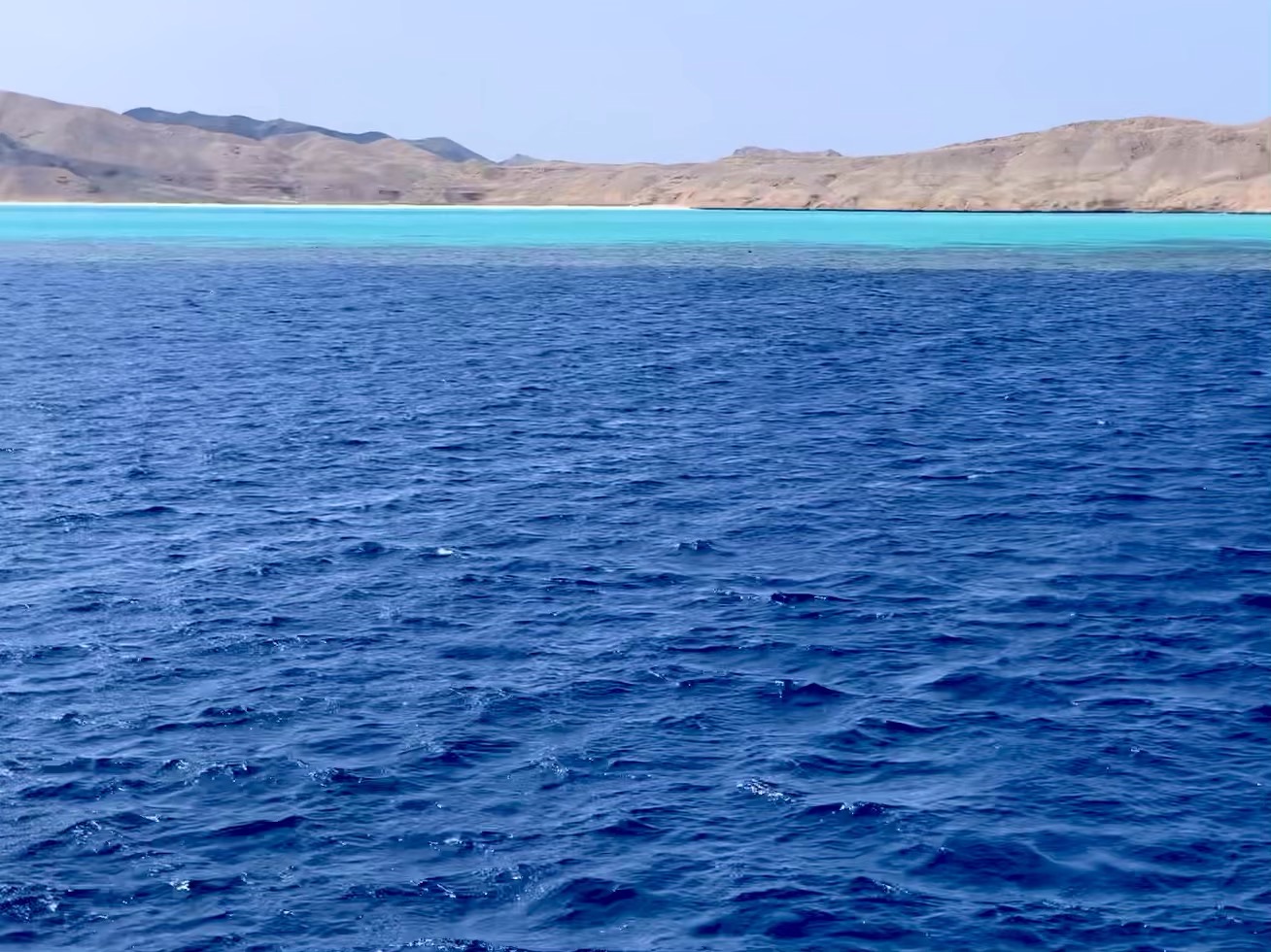
Rocky Island
Rocky Island is a small island, twenty minutes cruising from Zabargad and a pelagic haven, featuring a great variety of sharks, such as tigers, white tips, silvertips and hammerheads, manta rays, countless groupers, jacks and barracudas.
Its walls are tumbling down to more than 100 meters. They show tapestries of sea fans, gorgonians, mountain corals, black coral trees and staghorn corals. It’s sheer fascinating seeing the waving gorgonians, subject to the current’s rhythm,.
Rocky Island is exposed to the sea and the elements, attracting a fabulous range of silver tips, and hammerhead sharks. It gave rise to the sobriquet ‘shark theatre’.
Unlimited visibility adds to the fish tank feel and fascinating marine life, featuring Red Sea bannerfish, the clearfin lionfish, the zebra angelfish, blackspotted sweetlips, the rusty parrotfish and the devil scorpionfish.
Aquatic Panorama
- Staghorn corals
- Mountain corals
- Gorgonians
- Tubular sponges
- Ruste parrotfish
- Bi-colour wrase
- Zebra angelfish
- Hammerhead sharks
- Spanish dancers
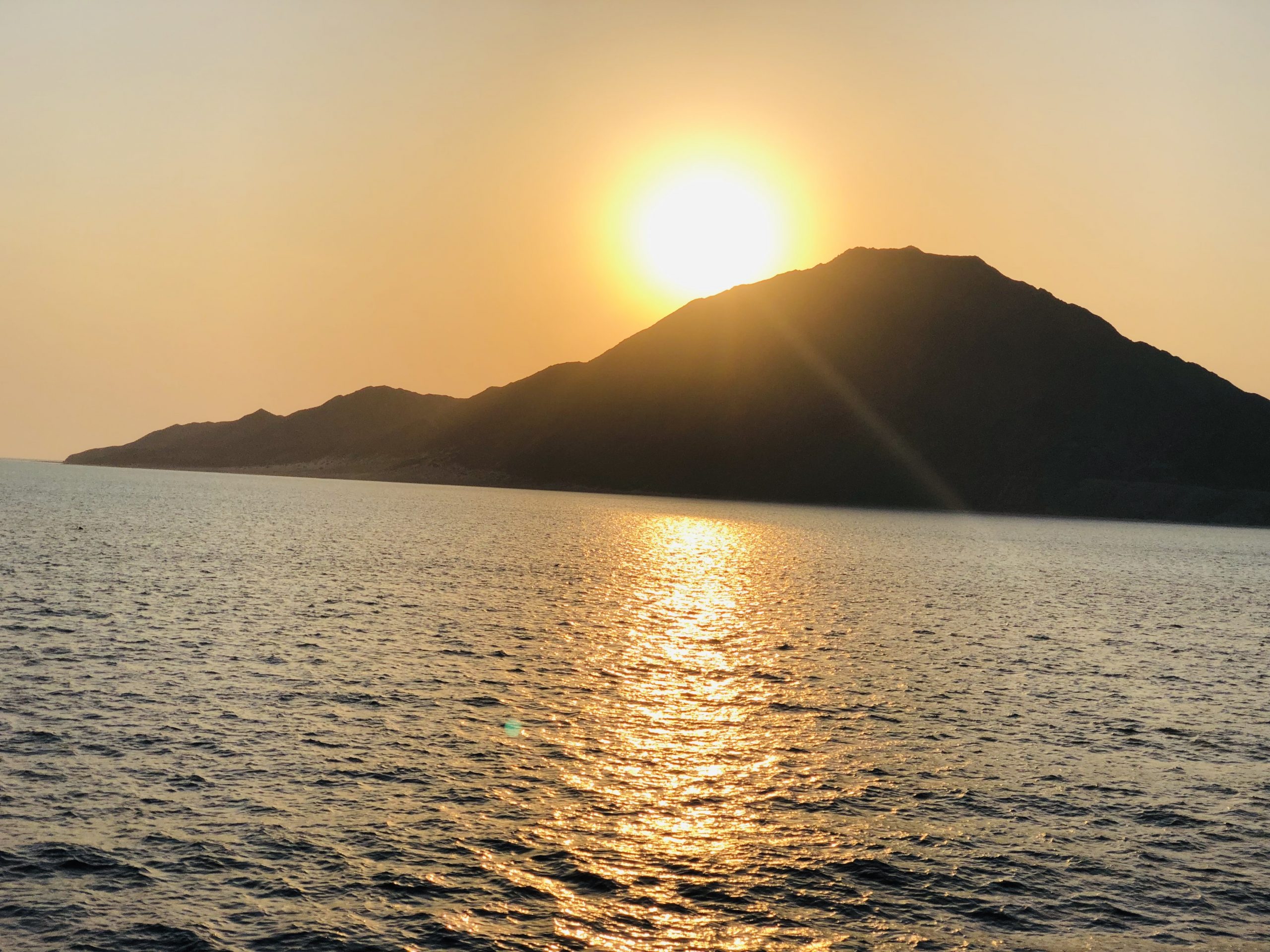
Zabargad Island
Zabargad takes its name from the mineral olivine gem, once mined on the island. It’s location is southeast of Port Berenice. Wall drops here to 15 to 20 meters. The seabed is equipped with coral towers and pinnacles. The floral landscape is formed by innumerable species of corals, such as the staghorn coral, the honeycomb, the flowerpot and tapestries of sienna brown tubular sponges.
Zabargad Island’s claim to fame is its labyrinthine panorama of coral canyons,, grottoes and corridors. They have been created by interlinking pinnacles and pillars, forming punctured rooftops. Those punctures ‘filter’ sun rays, penetrating through crevices and cracks, turning Zabargad into a poetic affair.
Aquatic Panorama
- Tubular sponges
- Staghorn corals
- Coral grottoes
- Pinnacles
- Grouper
- Royal angelfish
- Orbicular burrfish
- Sabre squirrelfish
- Octopus
- Hawksbill turtle
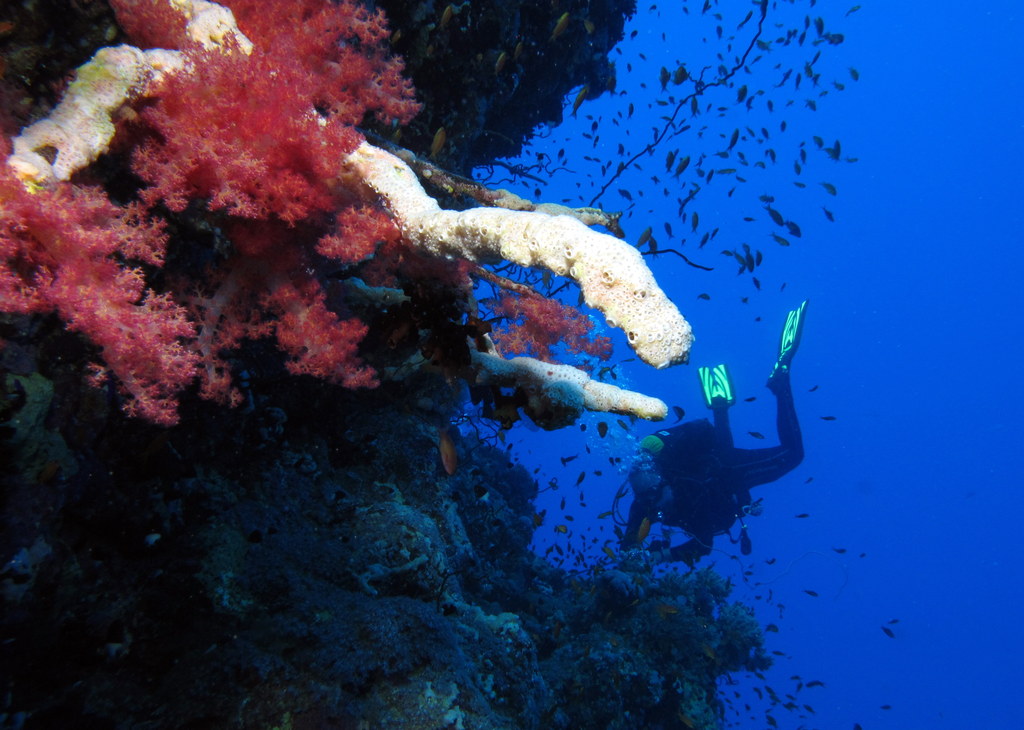
Gota Kebir St John’s
Large reef ay St. John’s. The northern section has two plateaus that are ideal for spotting whitetip reef sharks and bluespotted stingrays. The current often splits here, making it ideal for shark encounters. The eastern and western sides have deep sloping reefs of predominant brown soft corals; the eastern side is normally dived in the morning and the western side in the afternoon.
In the southeast corner the wall is broken by deep fissures that you can enter and tunnels to dive in. Elsewhere in the south, there is a sloping plateau that unicornfish and rabbitfish make home. The shallows here have many colourful magnificent anemones and green turtles.
Aquatic Panorama
- Soft corals
- Mantas
- Grey reef shark
- Hammerhead shark
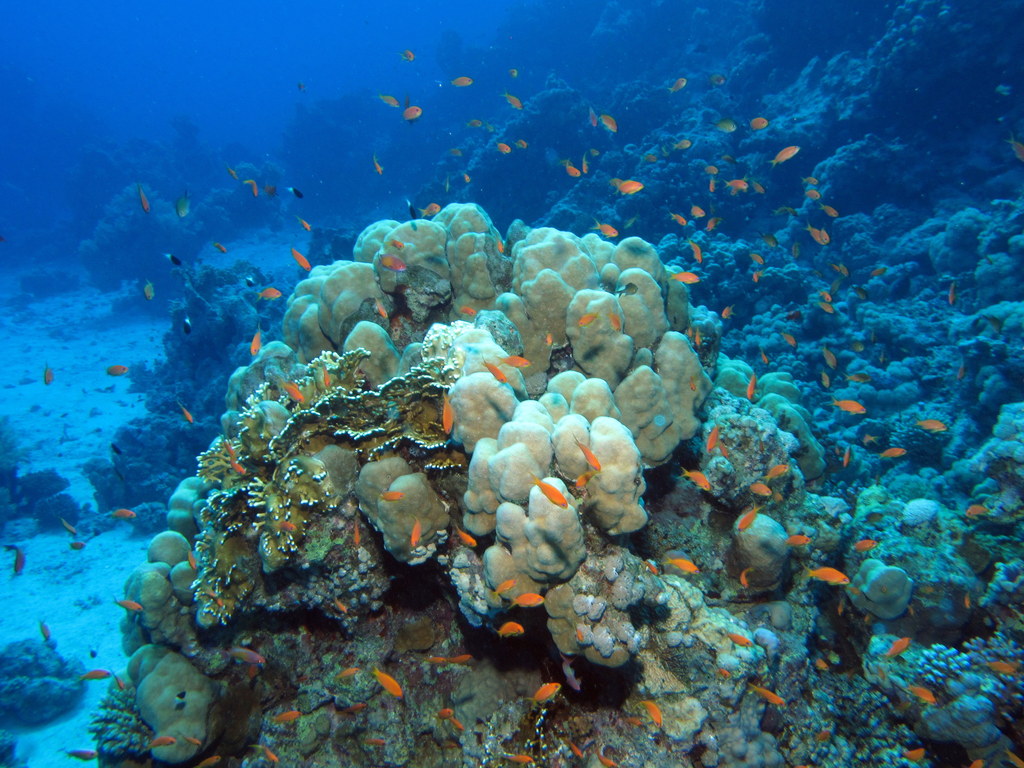
Dangerous Reef St John’s
South of St John’s Reef. Gentle current. Shallow. Depth up to an average of 18 meters. Great swim-throughs. Many breaks in the reef make easy access possible. Good shelter from wind and waves.
Aquatic Panorama
- Soft coral
- Napoleon wrasse
- Masked pufferfish
- Spanish dancers
- Moray eels
- Squid
- Bluespotted stingray
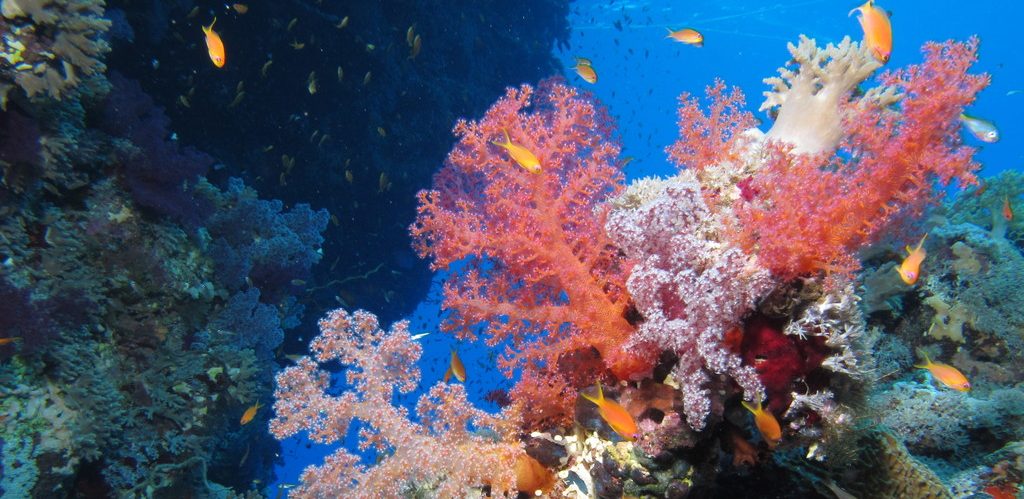
Umm Khararim
Site Position
25 km north of St John’s Reef and 20 km south of Sernaka island in the Foul Bay archipelago.
Sea Conditions
Great visibility. Acceptable currents. Umm Khararim accommodates divers of all levels.
Profile/Specifics
Depth ranging from 5-15meters, creating a labyrinthine landscape of caves, grottoes, caverns and meandering passages. This is fairy tale stuff with penetrating sun rays making for a mesmerizing scenery. One formation rises above the surface from the abyss like a coral phoenix . It’s a breath taking sight. Refrain from entering branching site passages and respect the main routes.
Aquatic Panorama
- Brain coral boulders
- Tree, table, leather corals
- Giant sea fans
- Cube boxfish
- Giant clams
- Whitebelly damselfish
- Bluespotted stingray
- Red Sea steepheaded parrotfish
- Whitetip reef sharks
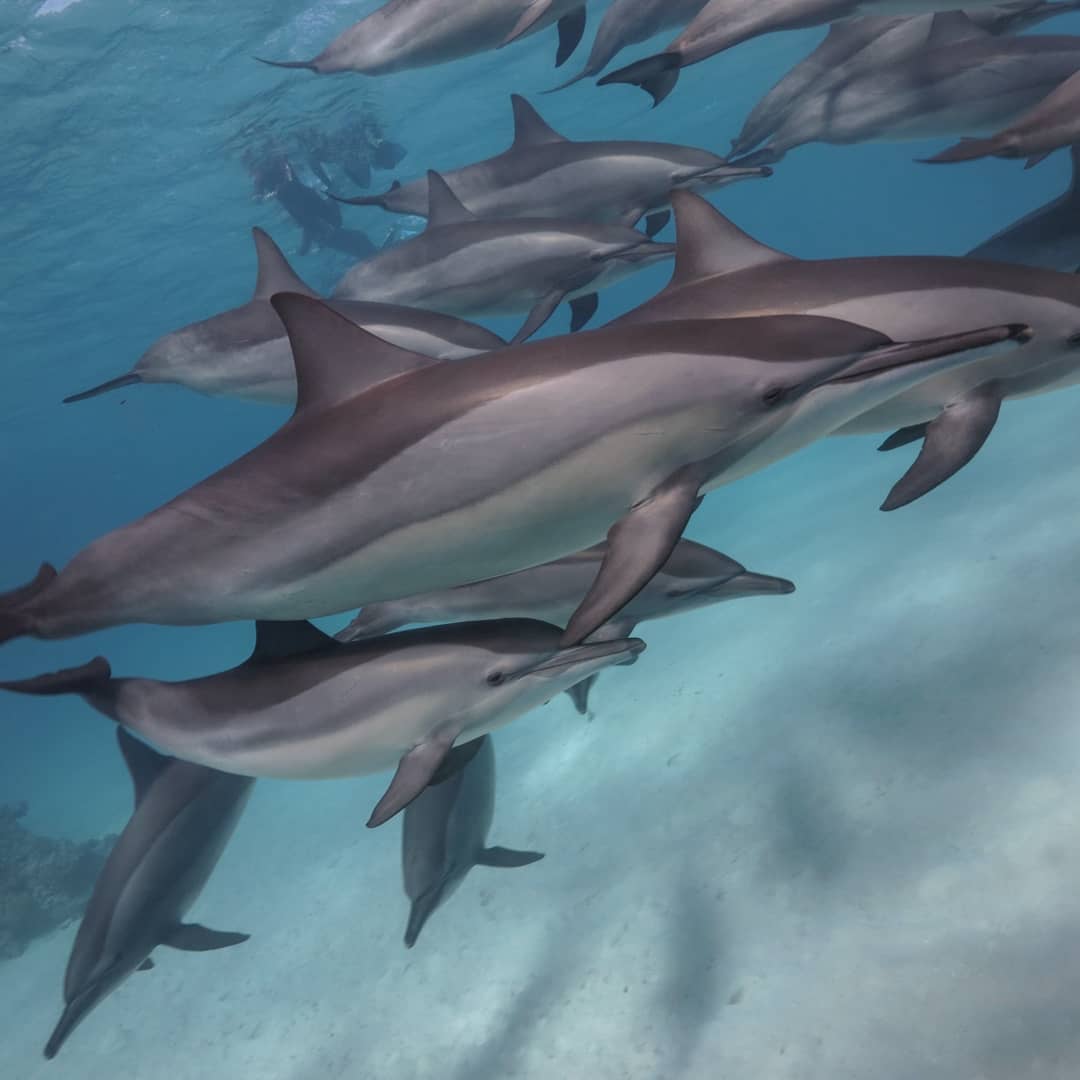
Shaab Sataya/Dolphin Reef
Shaab Sataya, also goes by the name of Dolphin Reef. It is your prime option to spot the friendly animals in the wild. It has the shape of a banana or a crescent and shelters a large pod of spinner dolphins. Sometimes you can hear the dolphins ‘cry’ with their high-pitched sounds and whistles. Always bear in mind that dolphins are wild animals. They are not like your house pets. They don’t appear in command. Therefore, sightings or encounters cannot be 100% guaranteed.
Shaab Sataya has become the residence of turtles such as the green and Hawksbill turtles, the Red Sea pufferfish, the bi-colour parrotfish, the cube boxfish, the clearfin lionfish and the orangehead butterflyfish.
Aquatic Panorama
- Soft corals
- Red Sea pufferfish
- Orangehead butterflyfish
- Blue-spine unicornfish
- Spinner dolphins
- Bluespotted stingrays

Shaab Claudio
Site Position
Shaab Claudio, comfortably protected by the winds, is a fine destination with the Fury Shoals system. Here the penetrating and filtering sun rays are playing tricks with your mind. It is as if you are entering magical mystery rooms and galleries; such are the illuminating coral chambers. Its light effects are simply stunning! It does not take to much imagination to feel you are swimming through Emmenthaler cheese!
Shaab Claudio has become the playground for a plethora of fish species in each imaginable size, shape and colour!
The landscapes are fantastic coral garden, mountains of hard corals, the canyon where crystalline visibility and play of light are fascinating! Very rich, Claudia is home to nudibranch, yellowfin goatfish, triggerfish of all kinds, parrotfish, a multitude of schools of bannerfish, angelfish, snapper and nason but also napoleon and turtle.
Aquatic Panorama
- Coral grottoes
- Gorgonia
- Steepheaded parrotfish
- Humpback snappers
- Picasso triggerfish
- Longnose hawkfish
- Whitetip reef shark
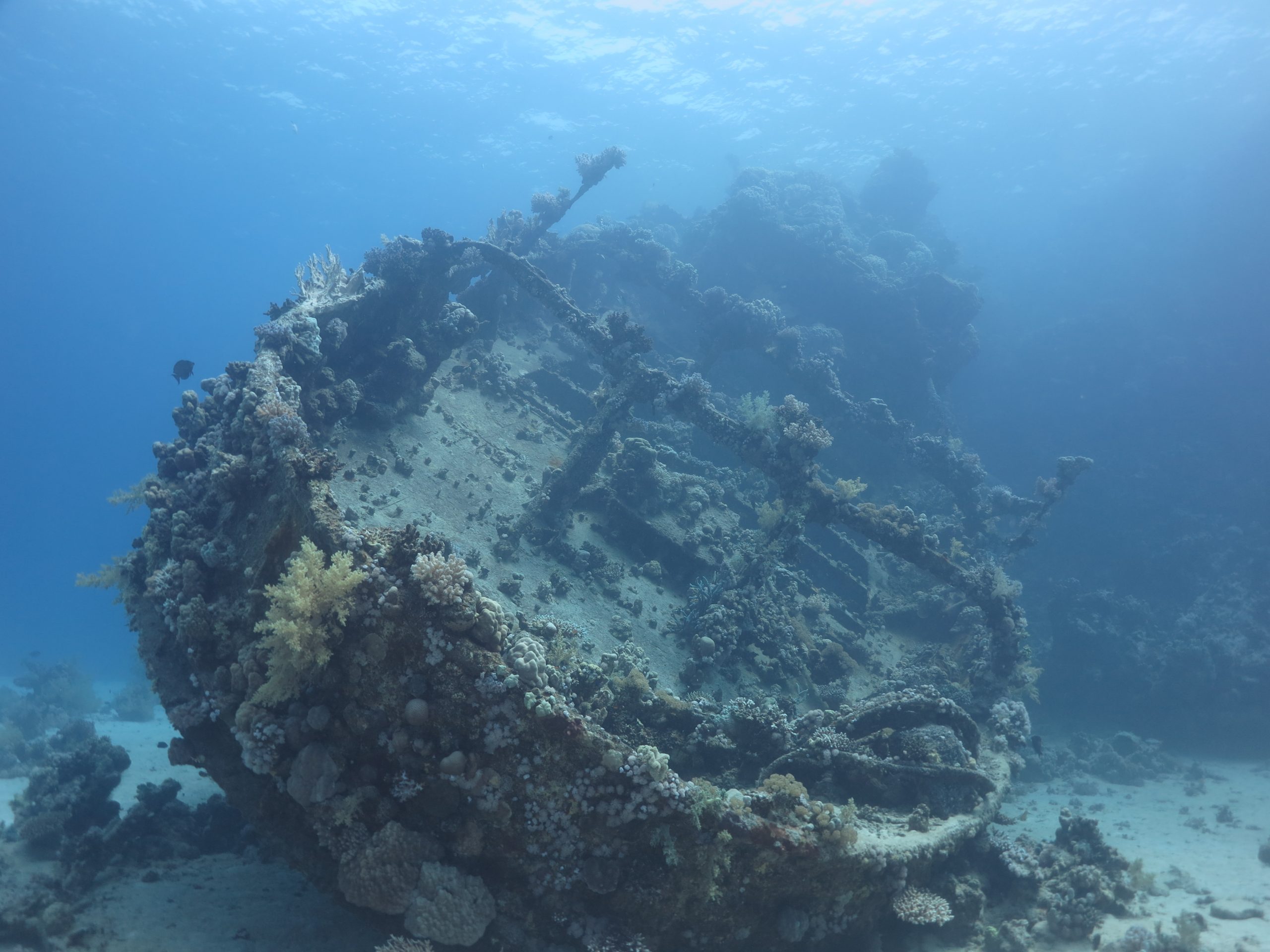
Abu Galawa Kebir
It is the home of Abu Galawa “Surayar” reefs,
There is a small tugboat wreck on the north side of the reef, 18 meters below the surface.
The wreckage is in good condition and appears clearly with almost nothing missing from the foundation. Where there is crystal clear water helps to discover and examine all the small details of the wreck of Abu Galawa. Apart from the proverbial silver glass fish walls, you can discover many important things of the sunken locomotive such as motors, propellers, lamps and containers.
There is an abundance of huge coral reefs worth experiencing.
Aquatic Panorama
- Soft Coral Trees
- Table coral
- Reef shark
- Masked Puffer Fish
- Moray eel
- parrot fish



